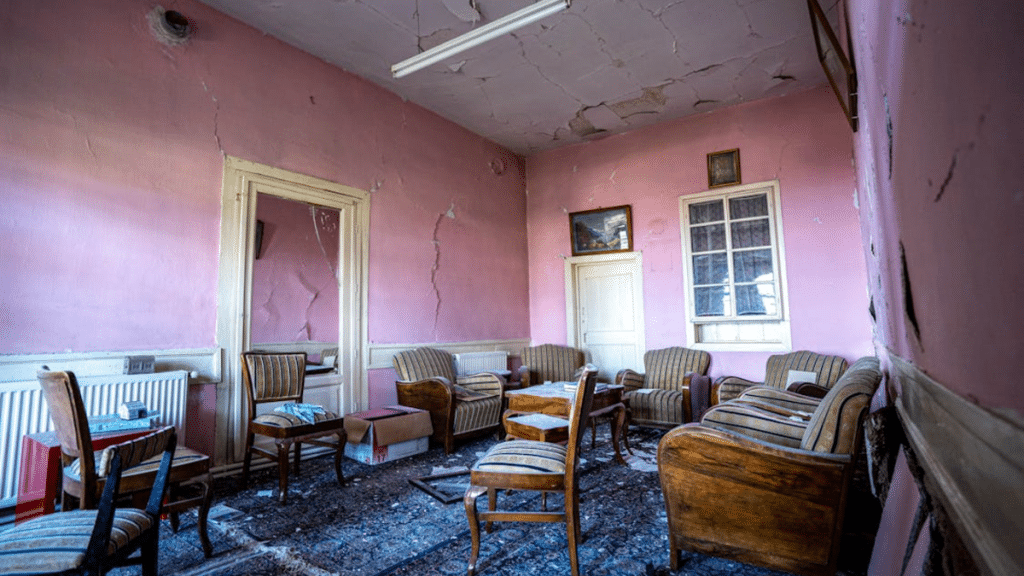Have you recently started noticing that your home’s windows and doors no longer close smoothly? Is this issue accompanied by small, noticeable cracks on the ceilings or walls in more than one room? If so, you may be seeing the early signs of your building becoming distressed.
While it’s true that a fresh coat of paint can easily cover the cracks, it’s essential to point out that the issue may be deeper than the paint level. In these instances, you may need to invest in the soil test Melbourne experts recommend to assess the exact cause. Keep reading as we take a closer look at what causes a building to become distressed.
Defining Distressed Buildings
The key element to every structure is a strong and durable foundation. It’s with this in mind that your geotechnical team will conduct several types of soil tests to assess the type of ground conditions you may be dealing with. This will help ensure that the right type of foundation is created to keep your building safe and durable.
However, issues with your foundation can happen. The most common of these is shifting, and when this happens, signs can be seen when the building walls start cracking or seem to become uneven. You will typically see these cracks manifesting above window and door frames or as brick-like patterns which lie diagonally down walls. In some instances, these cracks can also appear horizontally on the ceiling. When this happens, your building has become distressed.
Not dealing with the issue timely manner will see the foundation continuing to shift and more cracks developing. This, in turn, makes your home unsafe and can also make the space colder as cool air keeps coming into your home. Keep in mind that the more damaged the property becomes, the higher the repair costs will be.
Understanding the Causes of Foundation Issues
Combating the issues caused by a distressed house begins with enlisting a geotechnical team to perform a complete assessment of the building, foundation, and soil. Doing this will ensure that the safest and most effective long-term solution can be found. Many issues can contribute to your building’s foundation becoming unstable. Our team of experts have listed the most common to be aware of.
1. Cause 1: Unstable Clay Soil
Australia is well known for having very diverse soil types. This means that some areas, such as Melbourne, have high levels of reactive soils, or clay soils, which are a top cause of shifting foundations. Clay soils are highly prone to expanding when wet (also called soil heave) and then contracting significantly when dry (known as subsidence). This causes the building material used in your foundation to move and eventually crack.
Your geotechnical engineering team will recommend different moisture control solutions that can be implemented to keep the soil steady and reduce movement. Once this has been achieved, you can begin repairing the indoor cracks as well as refitting doors and window frames.
2. Cause 2: Poorly Constructed Stormwater System
Stormwater systems are a crucial aspect of keeping your foundation dry and stable. This is because they have been designed to collect and divert water away from your building. When your stormwater system isn’t big enough or has become clogged, water will start pooling around your building. This, in turn, leads to the water seeping into the soil, which then causes cracks to start forming.
A clear indication that your stormwater system could be the cause of your home’s cracks is slow draining. Rectify this by clearing out your gutters, downpipes, and other plumbing pipes of potential blockages. Underground pipes may require the assistance of a drainage plumber before any structural repairs can begin.
3. Cause 3: Surrounding Trees
It’s not uncommon for property owners to add trees and shrubbery to their spaces when the building is completed. While these are excellent for offering shade and accentuating every garden, invasive root systems can suck up large quantities of water from the soil, which can cause the soil to shrink. This will eventually cause issues with your foundation.
To combat this, new developers should always focus on planting trees at least one and a half times their adult height away from the building. That means that large tree species that are going to grow quite big should always be planted far away from the house. Rather, plant smaller shrubs and miniature trees with smaller root systems that won’t affect the water content in the soil.
Experts recommend using a professional landscaping service to help you choose the best plants that will provide your space with shade and aesthetic value without risking your foundation. It’s also suggested that you keep taller trees pruned to keep leaves from clogging up gutters and downpipes.
Final Thoughts
Investing in superior geotechnical investigations is the first step to take toward getting your foundation and structure repaired or replaced. If you find a potential foundation issue, it’s essential to consult with a geotechnical engineering team as soon as possible. For new builds, insist on the best and most comprehensive soil tests for your specific area. This will ensure that your home is safe for years to come!
Angela Spearman is a journalist at EzineMark who enjoys writing about the latest trending technology and business news.

